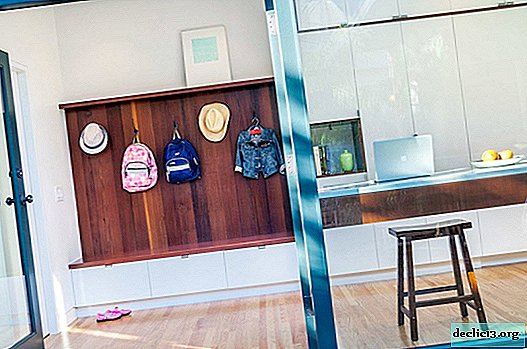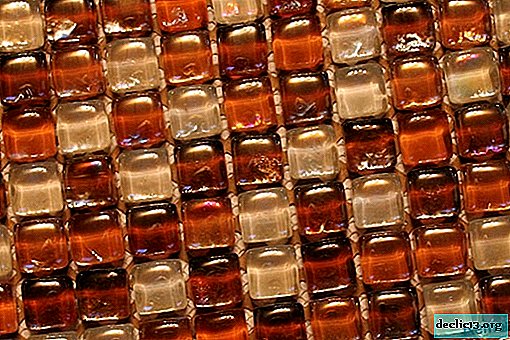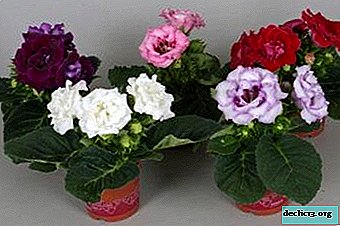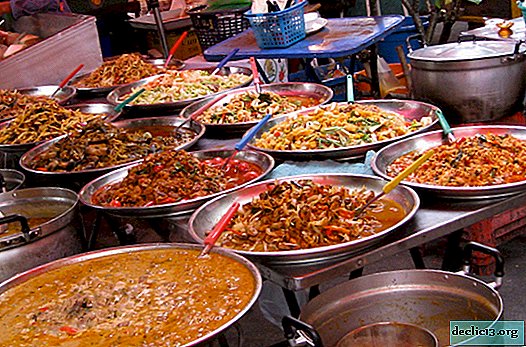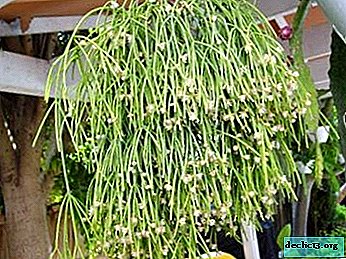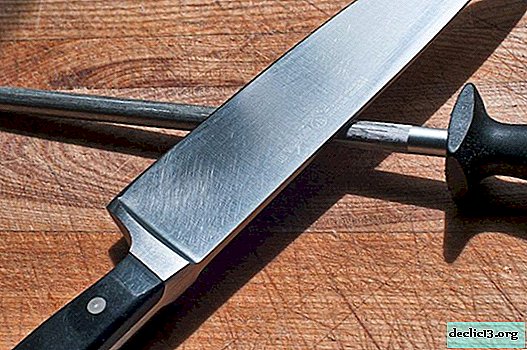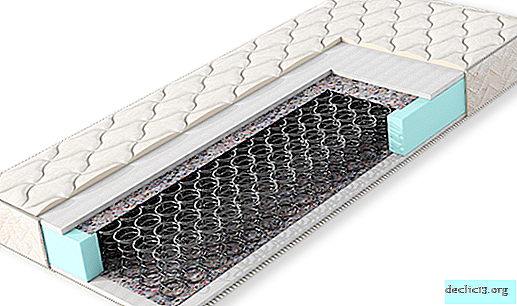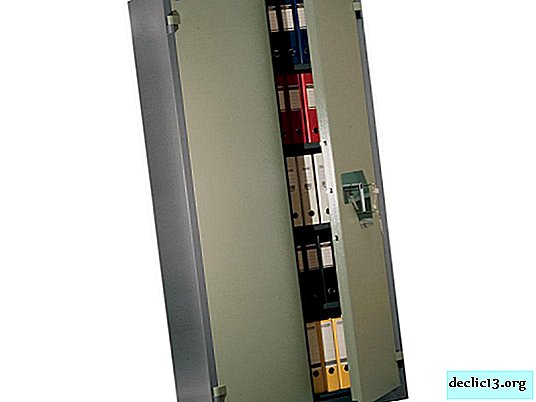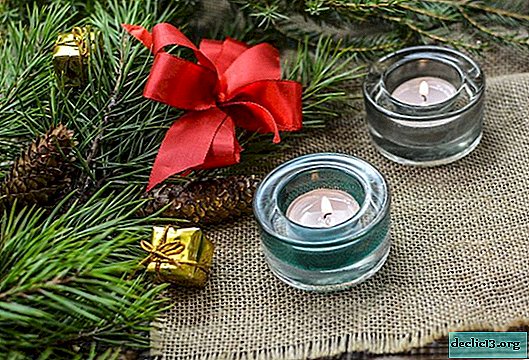Features of caring for hymnocalycium at home and ways to eliminate flower diseases
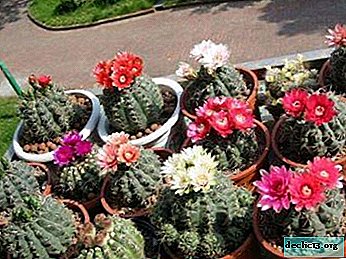
Gymnocalicium is a spherical representative of the cactus family. The plant is unpretentious and its main feature is the ability to develop in any environment and adapt to a variety of conditions.
In this article, you will learn about caring for this cactus and how to cure its ailments. You will receive useful information about how the wintering period of this plant goes.
For clarity, we will provide you with useful videos that will be useful to you in the future care of the cactus.
How to care for a cactus at home?
Temperature
Under natural conditions, the cactus grows in hot areas, so in spring, summer and autumn, the optimum temperature for it is 25-30 degrees. But if the thermometer rises higher, the hymnocalymic will still be comfortable. In winter, the indicator needs to be reduced to 15, although in extreme situations, the plant can withstand lower temperatures, up to 5 degrees.
Watering
Watering is carried out as the soil dries up, the water is used settled, warm, slightly acidified. When buds appear and until the end of flowering, you need to water more often, every other day. Very grateful cactus responds to spraying during the heat.
By the end of summer, watering is reduced, and by mid-autumn it is completely limited, moistening the soil no more than once a month and with small amounts of water.Shine
The plant is photophilous and needs bright lighting, especially in the winter. He does not like direct sunlight, so in summer the plant can be shaded so as not to put it at risk of being burnt.
Priming
Soil from a mixture of turf, peat and sand is suitable for planting a hymnocalycium in equal proportion with the addition of a small amount of charcoal and brick chips. The main criteria for the soil should be its weak acidity and the absence of lime impurities. You can use the prepared soil for cacti and succulents.
Pruning
 You can trim the hymnocalycium in case of illness, or if it has acquired an unaesthetic form. Pruning is also done to restore the compact size of the overgrown plant.
You can trim the hymnocalycium in case of illness, or if it has acquired an unaesthetic form. Pruning is also done to restore the compact size of the overgrown plant.
The procedure is as follows:
- Wash hands. To disinfect a knife.
- Trim the required part of the plant. Sprinkle the slice abundantly with charcoal, wood or previously crushed pharmacy activated.
- Leave the plant in a dark, dry place for a couple of days. Coal slices should dry.
- If the cut material is planned to be used as a planting material, it is also kept for two days in a dark place, then put in a mug with water so that the cut is at a distance of 3-5 cm from the water, but does not dip into it. After some time, roots will appear from the cut. You can lay them on the ground in a container for further germination.
Top dressing
Additional nutrients are applied to the ground in spring and summer once every 2-3 weeks.
Important! Only mineral fertilizers are suitable for the flower; organic fertilizers are destructive for it.For top dressing, special compositions for cactus are used, which can be purchased at a flower shop.
Pot
The main condition for comfortable growth for the hymnocalycium is the ability to feel the roots of the pot. The growth of this cactus is slow, therefore too large capacity for its maintenance can provoke the development of diseases.
Transfer
The hymnocalycium grows slowly, so it needs a transplant no more than 2-3 times a year. Young cacti to stimulate development, can be transplanted annually in the spring.
The procedure is carried out as follows:
- They stop watering the cactus 3-4 days before transplanting so that the earthen lump completely dries out.
- The plant is taken out of the old pot.
- Gently cleaned of the earth and dead parts, washed with very warm water.
- Leave to dry for two days.
- After the set time, the plant is moved to a new container with prepared soil.
Read more about how to transplant and transplant Gymnocalycium correctly and what to do with seeds and children, read in this article.
Actions after the purchase
Having brought a plant from the store, it is better to transplant it immediately into suitable soil. Transplantation should be carried out by transshipment method, he least injures the plant. If a cactus is purchased in the summer, you do not need to immediately expose it to bright light. Sun rays after store lighting can injure the hymnocalycium. It is necessary to allow the plant to adapt gradually.
What to do during flowering and at its end?
 The flowering of the hymnocalicium begins in 2-3 years of life. It lasts from May to August. During this period, he needs a sufficient amount of sunlight. During flowering, the cactus is very sensitive to changes in temperature and location, you should not disturb it unless absolutely necessary.
The flowering of the hymnocalicium begins in 2-3 years of life. It lasts from May to August. During this period, he needs a sufficient amount of sunlight. During flowering, the cactus is very sensitive to changes in temperature and location, you should not disturb it unless absolutely necessary.
After flowering, care for the cactus consists in preparing and organizing the wintering that is right for it. It is with comfort that the experienced resting period ensures that the plant can gain strength for the next set of buds.
Wintering
Caring for the hymnocalycium in winter implies extremely rare watering, which, in comparison with the summer period, needs to be gradually reduced since autumn. Winter is a dormant period for a cactus, therefore, in the room where it is contained, the temperature should not exceed 13-15 degrees, otherwise the plant will wake up and will be exhausted by spring and will not be able to pick up buds.
If the plant is in open ground
- The best place for growing hymnocalicium in open ground will be a well-lit place, slightly shaded from direct sunlight.
- Every year, the soil under the cacti needs to be replaced and all weeds carefully removed; the cactus cannot cope with their neighborhood.
- If there is no rain for a long time, the plant must be watered. Water should be soft, not from the well, not cold.
- Around the plantation of cacti, you must carefully mow the grass.
- If night temperatures drop below 5 degrees, you will need a film cover.
Diseases and Pests
| Disease | Description of the disease | What to do? |
| Flat red tick | Pest damage is manifested in the form of dried rust spots on the cactus epithelium. The problem is characteristic of young plants | To remove the insect, the trunk is washed with hot water and treated with an insecticide. |
| Root worm | The affected plant stops growing and does not bloom | Long-term washing of the roots with hot water or root baths will help get rid of the pest. You can also treat the soil with insecticides. |
| Root rot | Occurs when improperly maintained. The wine may be too nutritious substrate or excessive watering, especially in cold weather. | To save the plant, the roots must be washed with hot water, cut to a healthy tissue, sanitized, dried and rooted, like a shoot |
Breeding
Gymnocalyciums propagate by lateral layers and seeds.
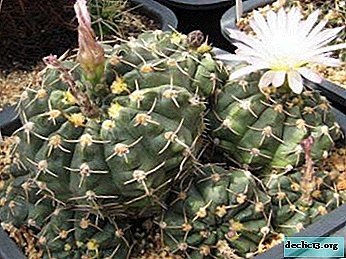 The lateral process, which does not have its own roots, separates very easily, if you turn it around, grabbing it with your fingers or tweezers, it can easily be separated from the mother stem. The shoot can be left for a couple of days in a dry place, and then put on rooting in a moist substrate.
The lateral process, which does not have its own roots, separates very easily, if you turn it around, grabbing it with your fingers or tweezers, it can easily be separated from the mother stem. The shoot can be left for a couple of days in a dry place, and then put on rooting in a moist substrate.- For propagation by seeds, the same substrate is taken as for an adult plant, but with a smaller fraction. Sowing should be carried out in shallow containers on the surface of moistened soil. During germination, the planting is covered with a transparent cover to maintain constant humidity. From time to time, the container must be opened for ventilation. The room temperature at this time should be about twenty degrees.
The gymnocalycium, for all its unpretentiousness, is very decorative. Its flowers, in size, usually significantly exceed the stem. Spines are also an adornment; long and curved, they have a very interesting color.
Useful video
Further, an informative and visual video about the care of a cactus Gymnocalicium:

 The lateral process, which does not have its own roots, separates very easily, if you turn it around, grabbing it with your fingers or tweezers, it can easily be separated from the mother stem. The shoot can be left for a couple of days in a dry place, and then put on rooting in a moist substrate.
The lateral process, which does not have its own roots, separates very easily, if you turn it around, grabbing it with your fingers or tweezers, it can easily be separated from the mother stem. The shoot can be left for a couple of days in a dry place, and then put on rooting in a moist substrate.
